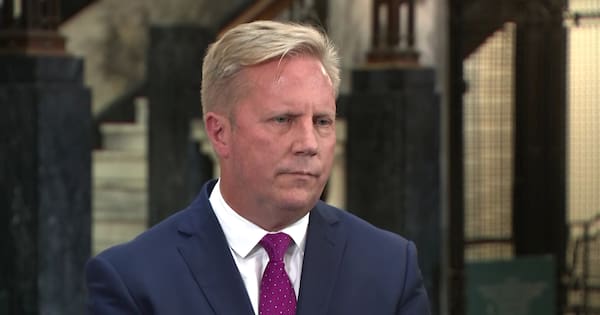Unpacking the Tariff Surprise: New Zealand’s Reaction to the U.S. Hike
Newly released documents have unveiled the New Zealand Government’s alarm and “dismay” following the United States’ unexpected tariff increases on New Zealand exports in August. This revelation starkly contrasts with Trade Minister Todd McClay’s public statement at the time, where he insisted that the new 15% tariff was “not surprising” and did not come as a shock to the government.
Internal Scramble at MFAT
Correspondence obtained by RNZ under the Official Information Act highlights a frantic effort within New Zealand’s Ministry of Foreign Affairs and Trade (MFAT). Officials described the tariff hike as an “unwelcome surprise” and noted it was “clearly unfair.” One email reflected the Prime Minister’s view that New Zealand had “been led to believe” its trade position would remain stable compared to other countries.
On August 1, just minutes after U.S. President Donald Trump signed the executive order at roughly 11 AM New Zealand time, NZ’s chief trade diplomat, Vangelis Vitalis, quickly sent out an URGENT Blackberry email: “US: Tariffs on NZ up to 15% but others will stay on 10%.” Unfortunately, much of the information in that message was redacted, leaving only a puzzled note: “This Note is obviously rushed.”
The swift communication indicated a high level of concern among officials. Grahame Morton, MFAT’s deputy secretary, responded with immediate disappointment, catalyzing a series of messages that revealed the finance minister’s office was still largely in the dark about the implications of the tariff hike.
Seeking Clarity and Data
By 11:52 AM on that fateful day, a senior public servant reported that Prime Minister Christopher Luxon had been briefed while traveling to Christchurch for a National Party conference. Officials requested “hard data” detailing the financial implications of the tariff and New Zealand’s trade surplus/deficit with the U.S. over the previous decade, highlighting the urgency and complexity of the situation.
Stock phrases were prepared for the Prime Minister’s public response, emphasizing their disappointment and the belief that New Zealand should not have a less favorable position than baseline conditions.
Diplomatic Pushback
Recognizing the weight of the situation, MFAT officials quickly moved to express their “serious concern and disappointment,” formally calling in the U.S. acting head of mission to convey New Zealand’s dismay.
The New Zealand embassy in Washington ramped up its efforts, reaching out to various senior figures within key government departments to articulate “deep concern.” They expressed their surprise and extreme disappointment at the unilateral nature of the U.S. decision.
A subsequent formal report noted that officials “pressed hard” for a one-on-one call between McClay and U.S. Trade Representative Jamieson Greer, which was successfully arranged for the following morning. The primary objective of this call was to urge a reconsideration of the tariff increase before its next steps took effect on August 7.
Looking Ahead: Realistic Expectations
Despite New Zealand’s determination to roll back the new tariffs, officials recognized realistic constraints on their efforts. Analysis indicated that the core reason behind the increased tariff rate was the trade imbalance favoring New Zealand—evidently exporting more to the U.S. than importing, which complicated discussions.
Washington-based staff highlighted that resolving the tariff issue would require addressing this surplus, potentially through large purchases, such as commercial aircraft from U.S. suppliers. They clearly noted that altering the executive order was contingent solely on presidential decisions.
During a media conference later that afternoon, both McClay and Economic Growth Minister Nicola Willis expressed their disappointment. Yet, true to the earlier narrative, McClay insisted that the government had not been blindsided, asserting that “there have been signals” indicating changes in trade policies.
In a recent statement to RNZ, McClay reiterated that while the hike was unwelcome and disappointing, particularly given New Zealand’s relatively minor trade surplus, the government had seen signs that adjustments were on the horizon.
These materials not only capture the immediate fallout from a significant trade decision but also reflect the complexity and nuances of international trade relations, especially during turbulent political environments.



